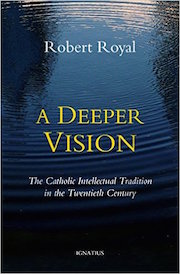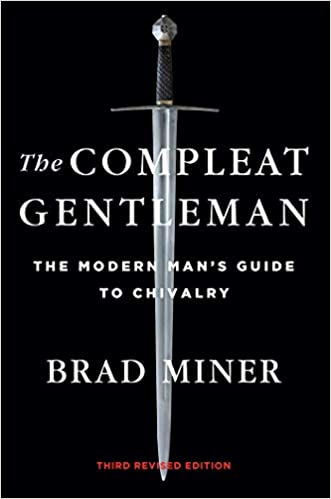When a priest has been credibly accused of the physical, psychological, spiritual, and sexual abuse of several dozen women over the course of more than three decades, simply moving him to another jurisdiction and returning him to ministry might seem like an obviously bad idea. This is true even – perhaps especially – when the priest in question is a world-famous artist.
If the same priest, while further investigations into mounting abuse allegations are ongoing, has been excommunicated for attempting to absolve an accomplice in sins against the Sixth Commandment, it might not be prudent to invite him to preach retreats at the Vatican.
And if this priest (if you haven’t already guessed, we’re talking about Fr. Marko Rupnik) has also been expelled from his religious order (the Jesuits) for “stubborn refusal to observe his vow of obedience” specifically in refusing to comply with restrictions placed on him in light of those numerous “very highly credible” abuse allegations, one might think it unwise to continue to promote his work through official Church outlets.
One might even be tempted to think that, given the Church’s decades-long struggles to combat the scourge of clerical sexual abuse – vows of greater transparency, legal reforms, apologies, and professions of closeness to victims of abuse, billions of dollars spent on legal settlements, scores of diocesan bankruptcies, millions of faithful scandalized, credibility squandered with generations of Catholics, and incalculable harm done to the evangelical witness of the Church – given all that, one might think that deciding to use some other religious art – any other art – as the background to news stories and the liturgical calendar on a Vatican website would be a no-brainer, the lowest of low-hanging fruit.
One might think all of these things, but apparently one would be wrong. Somewhere along the way, the presumption of Rupnik’s innocence in a legal context has transmogrified into an obligation of promotion, at least in the realm of Vatican communications.
This, at least, seems to be the considered view of Dr. Paolo Ruffini, the prefect of the Vatican Dicastery on Communications. Ruffini made that clear last week when, in remarks to the Catholic Media Conference in Atlanta, he responded to questions from journalists about his dicastery’s continued use of Rupnik’s art with a question of his own:
“Do you think that if I put away a photo of [Rupnik’s] art from. . .our website, I will be closer to the victims?” Ruffini asked. “Do you think so?” The question wasn’t rhetorical and, receiving an affirmative response, Ruffini flatly disagreed, “I think you’re wrong. I think you are wrong. I really think you are wrong.”
Not just wrong, it seems, but judgmental. Un-Christian, even.
Ruffini argued that the ongoing canonical processes against Rupnik make it presumptuous to stop using his art until a final verdict is in. “Who am I to judge?” he mused, as though the “processes” by which Rupnik was excommunicated (subsequently – and surprisingly – lifted) and dismissed from the Jesuits over these matters count for nothing. Ruffini also saw fit to mention that Rupnik is only accused of having abused dozens of adult women, not children. “We are not talking about abuse of minors,” a point not lacking in legal relevance but of questionable moral significance to the question of whether or not to continue displaying his artwork.
Ruffini maintains that removing Rupnik’s art – physically removing it from chapels and churches, but also, presumably, from the Vatican website – is “not a Christian response.” “The closeness of the Church to any victims (of clerical abuse) is clear,” he insisted.
Clear to whom?

I don’t know if, at this point, deciding to no longer feature Rupnik’s art on the Vatican website would show closeness to victims of abuse, but I do know that continuing to feature it over any and all objections communicates callousness, if not outright contempt.
I also know that we have a situation where Rome has no problem prohibiting parishes from publishing certain Mass times in their bulletins, but the thought of removing the art of a credibly accused, once-excommunicated, expelled Jesuit from the Vatican’s own website is dismissed as “throwing stones.” That says a lot.
And that is one of the sadder aspects of this whole affair. Dr. Ruffini was in Atlanta to deliver remarks on the role of communications in building communion within the Church. That’s an important topic, and Ruffini said some worthwhile things.
“Changing the narrative towards hope, recognizing the dynamism of good, setting hearts ablaze and orienting them towards communion, witnessing a different type of storytelling, which is generative and creative,” Ruffini told his audience in Atlanta, “this is the way to spread the good news and to give a Christian interpretation to anything that happens in the world.”
No doubt there’s truth in this.
But what Ruffini cannot or will not see – and surely, he’s not alone in his views at the Vatican – is that the handling of the Rupnik case represents the antithesis of all of that hope and dynamism and witness to the Good News.
It’s not just the sordid details of Rupnik’s alleged abuse that scandalizes, awful as those are. It’s the slowness to act, except in response to outside pressure. It’s the lack of transparency, the empty expressions of solicitude for victims, the lack of even-handedness and impartiality in administering the law. Perhaps most galling is the callous insistence that, if there’s a problem, it lies with those judgmental, stone-throwing, iconoclasts who keep ignoring the Vatican’s oft-professed good intentions to focus instead on its ever-lengthening record of inconsistent and inexplicable (or at least unexplained) action.
Surely that all adds up to a narrative the Church would do well to change, as Dr. Ruffini rightly suggests. More than a narrative, it is a painful reality, one which damages communion among the faithful. But it’s hard to imagine that reality changing until the Church realizes that this narrative – and this fractious reality – is one the Church has largely created by its choices and actions.















